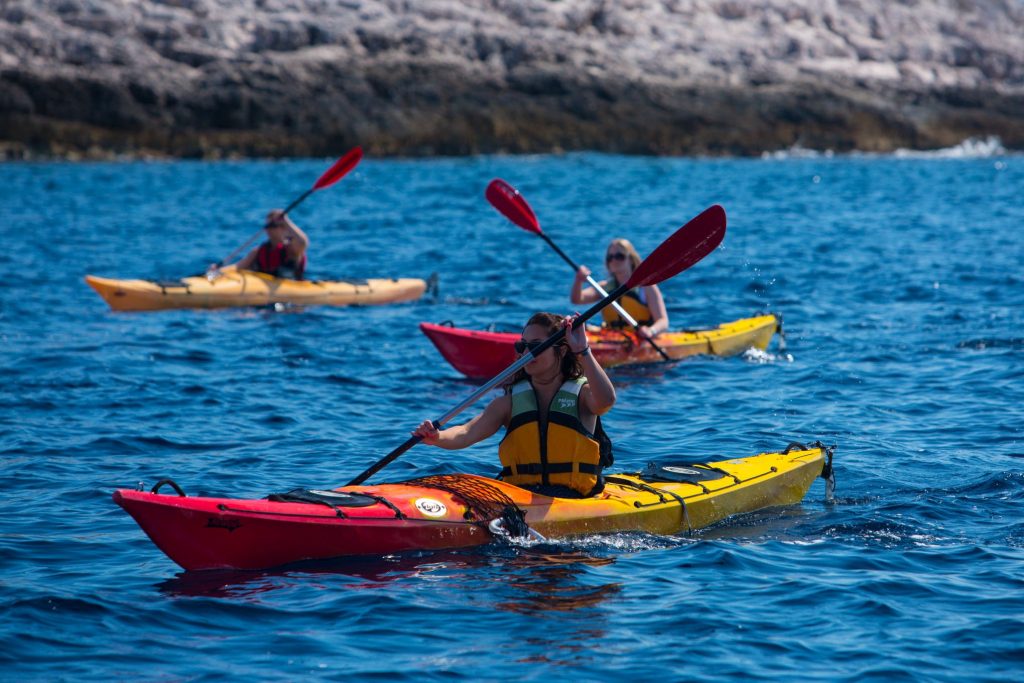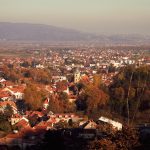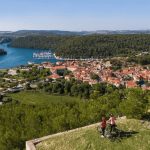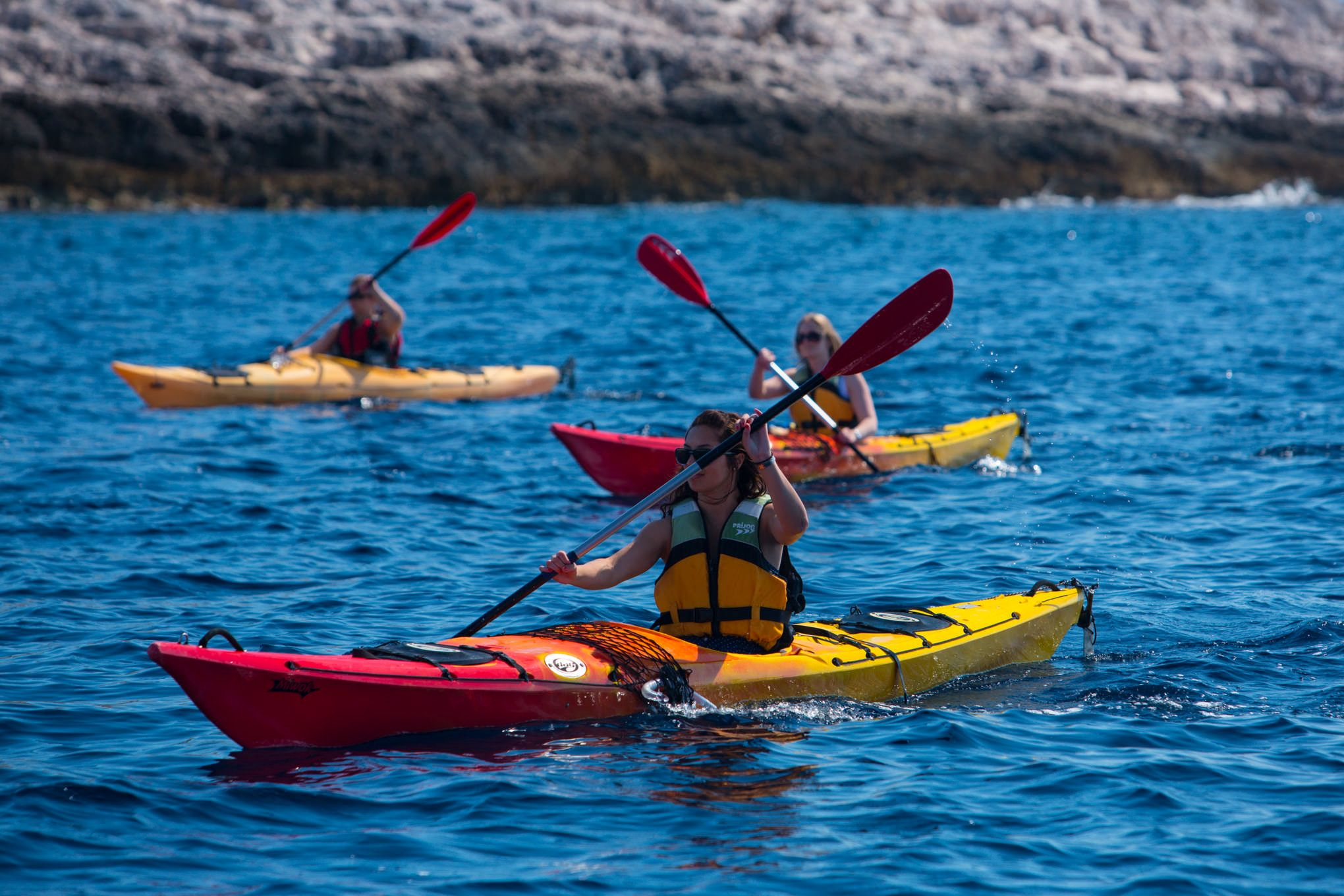
Think Croatian tourism has only sun, beach and sea? Think again. Croatia is an incredibly diverse activity playground, as TCN’s Daniela Rogulj explains on June 28, 2016, in the latest in our series, 25 Things to Know about Croatia – Adventure Tourism.
1. Sea Kayaking in Dubrovnik: Sea kayaking has gained instant popularity in the Adriatic due to its warm water and transparent sea. The climate is nearly perfect with heavy winds usually always predictable and unlikely in the summer, and strong currents with big waves rarely occurring. With over 1000 islands along our coast, sea kayaking takes you below rocky cliffs and through hidden coves, past Roman ruins and Napoleonic regions, and above sunken ships and colorful fish. Sea kayaking in Dubrovnik may be some of the best, taking you through the Elaphite Archipelago, green caves, limestone archways, and the islands just off the coast from the old town.
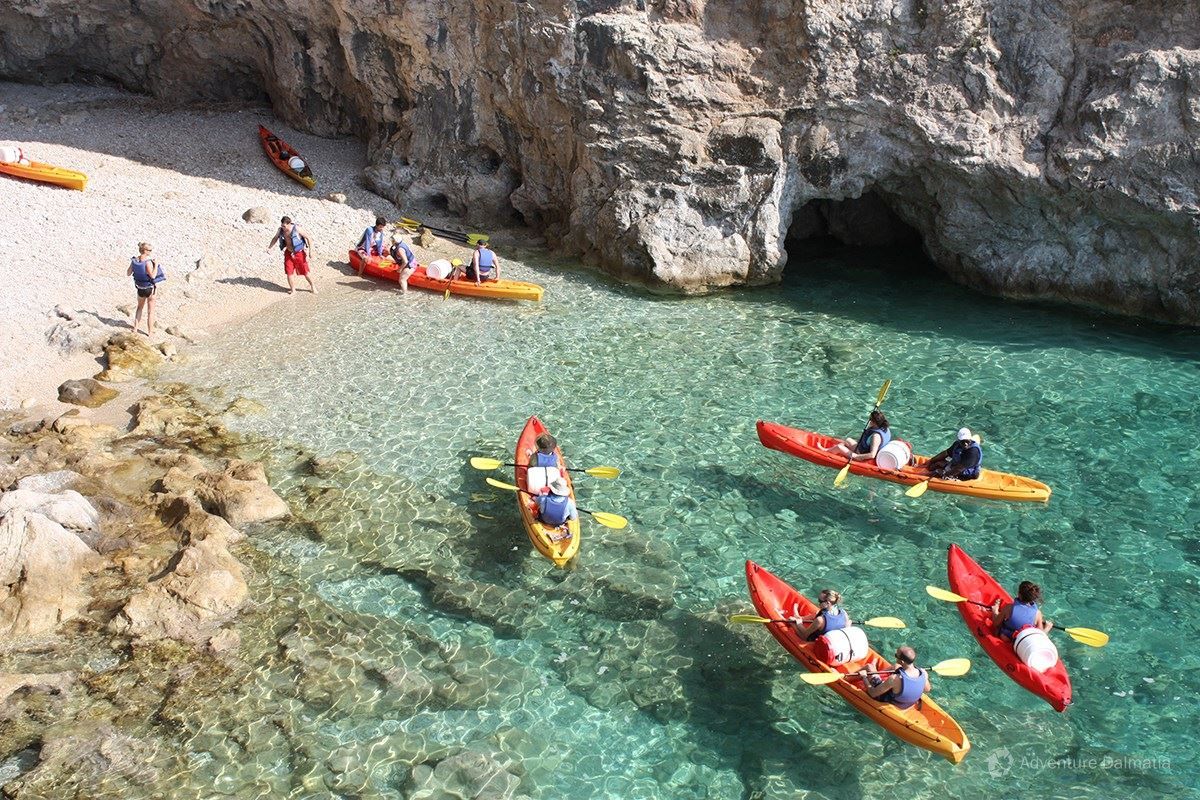
Photo courtesy of andventuredalmatia.com
2. Hiking Velebit mountain: Velebit Mountain is the largest mountain in Croatia, belonging to the chain of mountains in the Dinarides. Due to its rich, natural landscape, Velebit is actually protected as a nature park, with characteristics such as stiff cliffs, steep inclined slopes, and particularly defined as “karst”. The hiking trail is about 100 kilometers long, starting at Zavižan and ending at Velika Paklenica. The trail offers hikers a complete image of Velebit’s main features, and all paths are marked with tables and signs. The most beautiful parts of the Velebit hiking trail are the area between Zavižan and Alan in North Velebit and National Park Paklenica on South Velebit. A suggested 9 days is what it takes for the duration of the mountain, but there are other mountain trails for shorter hikes as you wish.
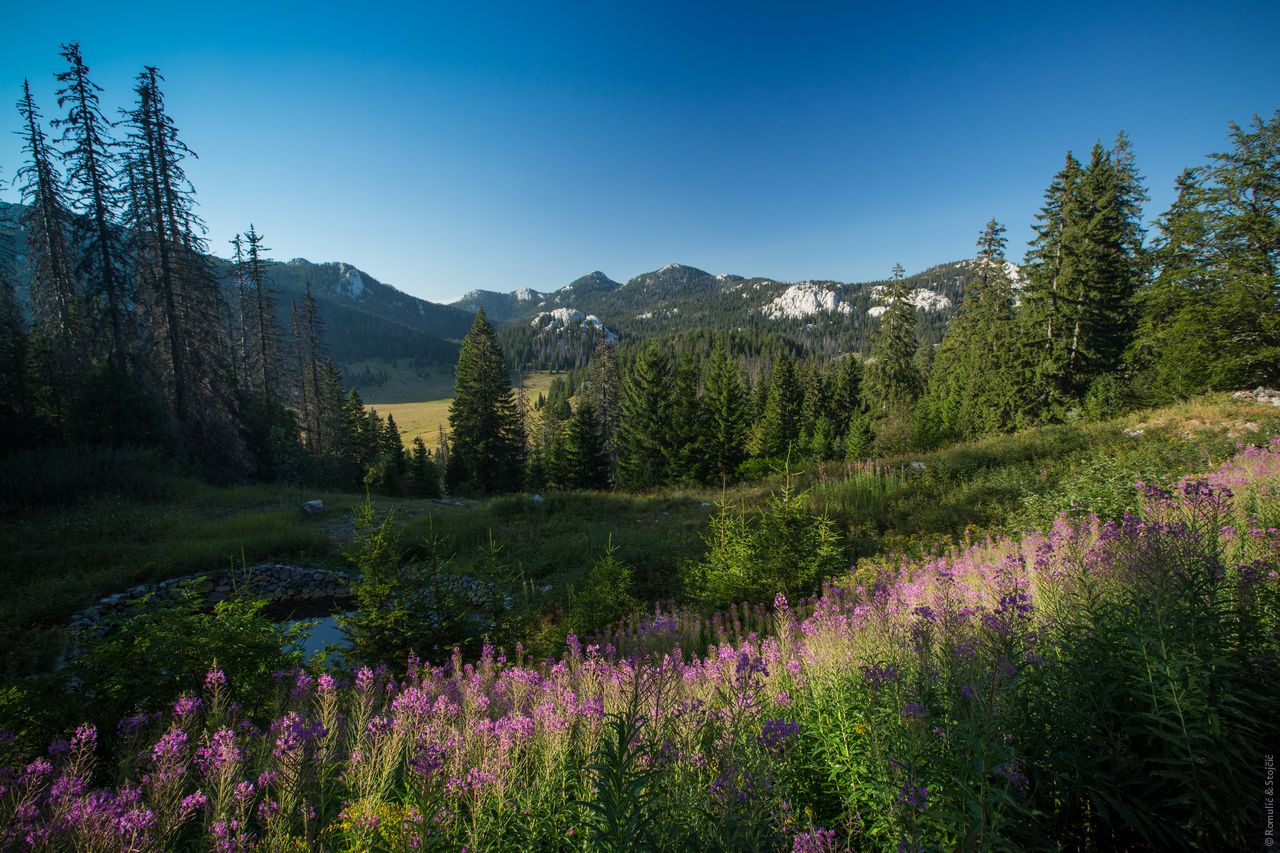
Photo courtesy of adventure-driven-vacations.com
3. Sailing the Dalmatian Coast: Typically best in the late spring before the crowds and while the landscape is still green, with water temperatures just right, this is perhaps the most popular Dalmatian excursion. The most famous route takes you from Split to Dubrovnik, or from the Kornati islands making your way south, visiting islands along the way such as Brač, Hvar, Vis, Korčula, and Mljet. The most desirable way to swim in isolated coves and taste the rich Mediterranean fare each island village has to offer, you’ll also visit historic and ancient towns such as Trogir, Šibenik, Zadar, and Dubrovnik – making this perhaps the truest way to explore the Dalmatian coast.

Photo courtesy of saildalmatia.com
4. Stand Up Paddleboarding in Baćina Lakes: Baćina lakes are situated in the Neretva River Delta, with the sea and surrounding mountains fully encompassing. Consisting of 7 lakes, the entire area amounts to 20 square kilometers, with depths ranging from 5 to 35 meters. The lakes are considered crypto depressions, with the surface of the lakes lying 80cm above sea level and the bottom of the lakes below sea level. Stand up paddleboarding through this area will take you through the 7 lakes to lotus flower fields, the “Island of Love”, the Ždrioc old bridge, and natural springs. The local history and traditions of this area are rich, and the diversity of flora and fauna surrounding Baćina are unique as ever.
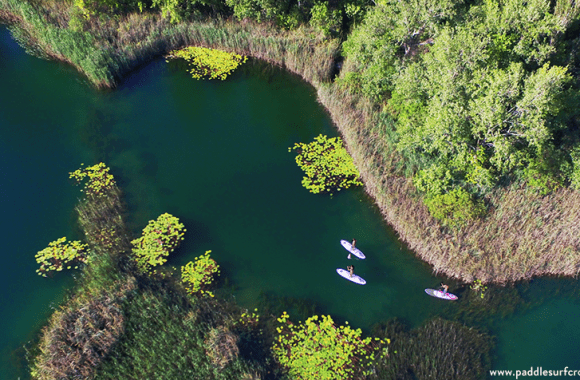
Photo courtesy of paddlesurfcroatia.com
5. Jeep Safari in Hvar: Traveling in off road vehicles, you can ride through the island of Hvar, passing through old inhabited settlements and deserted villages. Riding to the island’s highest peak of St. Nicholas which is 626 meters high, you are greeted with a view of the Adriatic islands and mountains in the Dalmatian hinterland. Passing through lavender fields, olive trees, and vineyards, this adventure takes you through Dalmatian specialties and ancient history, all in the comfort of your off road vehicle.

6. Windsurfing in Viganj on Pelješac: Viganj has quickly become a favorite location for windsurfers from all over the world. Because of the sea channel between Pelješac and Korčula, the wind that blows provides the perfect conditions for the sport, creating just the right amount of acceleration in the waves. The wind speed is usually around 5 beauforts, and if lucky, can reach up to 8. Viganj maintains good windsurfing conditions year round, with water temperatures usually never dropping below 15 degrees celsius, and average beauforts remaining between 5-6. There are several windsurfing schools in the region during the summer, and the channel usually maintains its lake like presence in the morning, making it perfect for beginner training.

Photo courtesy of ikorcula.net
7. Škraping in Pašman: Škraping is a unique international trekking race over sharp island rocks, definitely considered in the extreme sports category. Škraping takes place on the island of Pašman due to its razor sharp rock formation on the coastline, and yes, the race involves running, jumping, and trekking through it. Competitors are provided with a map of the island, with expected checkpoints they are to reach in the quickest time possible. The races are categorized from “Light” (covering 12km), “Challenger” (covering 25km), and “Ultra” (covering 47km). An extreme way to learn about the natural and cultural heritage of the island, Pašman is now a focal point for active tourism, holding this race annually every March.
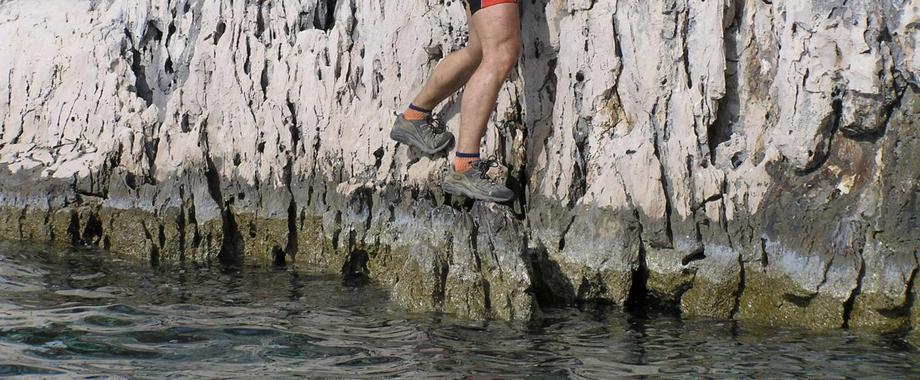
Photo courtesy of skraping.hr
8. Big Game Fishing anywhere in the Adriatic: The Adriatic sea is a fisherman’s paradise, with Bluefin Tuna, Amberjack, Swordfish, Sharks, Dorado, Snapper, Grouper and Little Tunnies being the cream of the crop. A range of techniques are offered from drifting to stand up fishing. Departure points usually start from either Split, Rogoznica, or Vodice, and many different big game fishing tours will offer all inclusive offers, usually available year round.
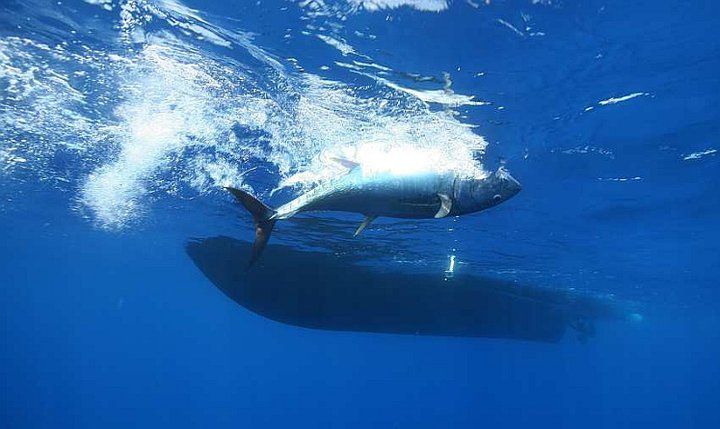
Photo courtesy of split-adria.com
9. Kiteboarding in Bol: A surface water sport similar to wakeboarding or surfing, kiteboarders harness the power of the wind with a large controllable power kite to be propelled across the water on a kiteboard. Because of the constant thermic sideshore wind Mistral, Bol is the perfect location for kiteboarding. Being right next to the most famous beach in Croatia, Zlatni Rat, doesn’t make it all that bad either. The winds usually blow between 15-25 knots, and the area has actually dedicated specific parts of the beach for kiteboarding only. The kiteboarding centers on Bol not only have you protected from swimmers, but also offer you a launching platform, rider surveillance, and any other kiteboarding assistance you may need.

Photo courtesy of zlatnirat.com
10. Flyboarding in Hvar: A flyboard is a type of jetpack or hoverboard which supplies propulsion to drive the flyboard through air and water to perform a sport known as flyboarding, the act of flying being the ultimate goal you are trying to achieve. Flyboarding is guaranteed to be learned between 2 and 20 minutes with an instructor, and 20 minutes to an hour to master on your own. You can flyboard in many locations throughout the coast, but flyboarding finally arrived in Hvar last year, so why not try it there?

11. Climbing at Paklenica National Park: Paklenica NP is the most frequented climbing location in Croatia, and has also gained recognition outside of the country. Rock climbing at Paklenica is varied from single pitch sport routes to big wall rock climbing routes up to 350 meters long. In total, there are 340 routes on quality limestone rock, with the majority of routes bolted. Ideal time for rock climbing Paklenica is April through October, as the winter tends to get windy and wet. The close proximity to seawater makes Paklenica an ever so unique location, and there is even an International Speed Climbing Competition held here every Spring!

Photo courtesy of adventure-driven-vacations.com
12. Running in Buzet, Istria: In the northern part of Istria, Buzet is on a 150 meter high hill overlooking the town and the Mirna River Valley. A circular trail around Buzet is most unique, taking you 24.8 kilometers in distance. The running trail covers a series of terrain, including everything from dirt, macadam, and narrow singletracks, also going through abandoned villages and small towns. The trail starts from Hotel Fontana and climbs and descends through the valley, taking you through villages and towns such as Pengari, Glistonija, Kuhari, Kotli, Krušvari, Račice and Dobrova, and abandoned villages Podkuk and Brnkali.
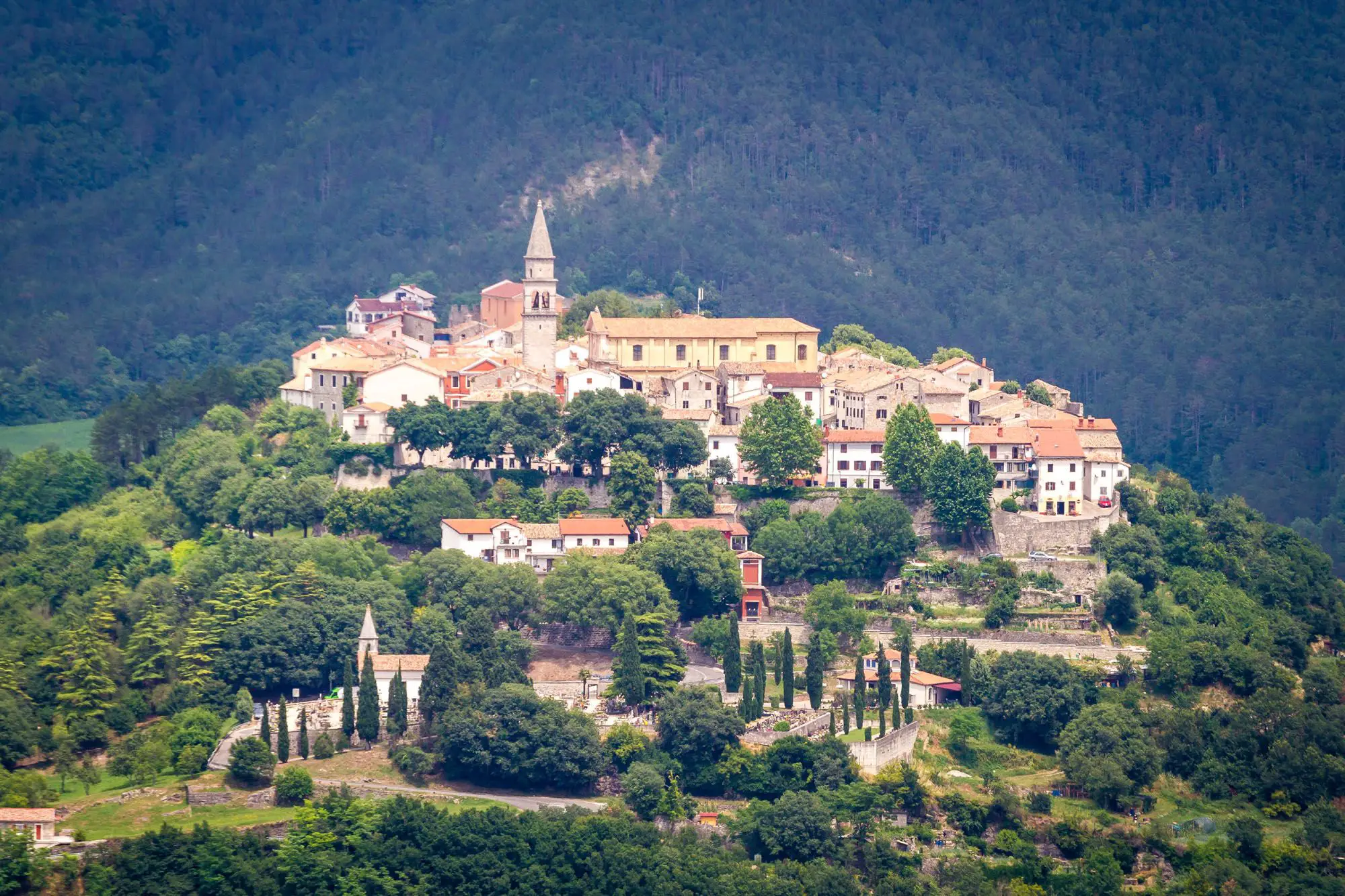
Photo courtesy of hrholidays.co.uk
13. Cycling Tour of Dalmatia: Cycling has quickly become a favorite amongst adventure tourists, and Croatia seems to provide the most picturesque and perfect terrain to fulfill a cyclists dream. One way to cycle through Croatia is to visit the three national parks, through the Dalmatian coast and islands all the way down to Dubrovnik. Starting in Zagreb, you can cycle through Plitvice Lakes National Park, then continue on down the riviera to Paklenica National Park and Krka National Park. From Krka you’ll head onto the islands Brač, Hvar, and Korčula, cycling through lavender fields, beaches, and fishing villages, finally making your way through the Pelješac Peninsula to Dubrovnik.

Photo courtesy of exodustravels.com
14. Skydiving from Zadar Airport: A Cessna C-206 plane takes you 3352 meters above the ground, presenting you with a panoramic view of the city of Zadar. For 50 seconds you will freefall at a speed of 200-250 kilometers per hour, with the brave and experienced ones taking control of the parachute. On your descent, the blue of the Adriatic lies beneath, with squinted views of Zadar’s rich architecture and history in the distance.

Photo courtesy of skydivingcroatia.com
15. Canyoning on the Cetina River: Canyoning is described as the sport of jumping into a fast flowing mountain stream and allowing oneself to be carried downstream at a high speed. Gushing for thousands of years, the Cetina River’s crystal clear waters and and untouched nature offers a true experience for canyoners. A 2 kilometer long journey with cliffs up to 180 meters high, natural pools, lakes, subterranean tunnels, and a 50 meter high waterfall, can you find a better location?
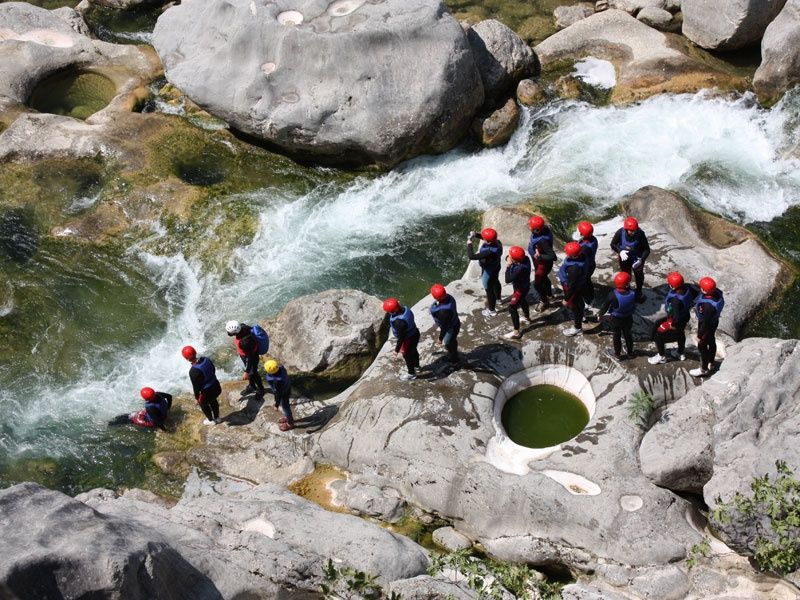
Photo courtesy of croatiacanyoning.com
16. Bungee Jumping off the Šibenik Bridge: The first tried and true bungee jumping bridge in Croatia, bungee jumping off the Šibenik Bridge started somewhere around 1999. With years of successful jumps and return customers, the bungee jumping season officially starts from the beginning of July to the end of August. The Šibenik bridge is 40 meters high and anyone brave enough to face this intense adrenaline rush is encouraged to do it. Safety is key, and this bungee jumping equipment has tested at a safety factor of 19, meaning 19 times stronger than the maximum possible load.
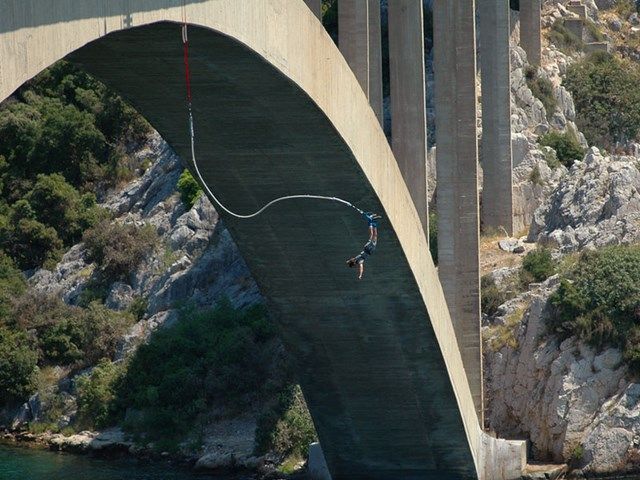
Photo courtesy of adria-mare.com
17. White Water Rafting on Zrmanja River: Zrmanja river is a 69 kilometer long journey in the southern part of the mountain Pljesevica. It flows to the Novigrad sea, passing through narrow valleys and majestic 200 meters deep canyons.The wild west like canyons of Zrmanja and Krupa rivers in Velebit NP are rated some of the best for white water rafting. The crystal clear waters, rapids, waterfalls, hidden swimming pools and steep sided canyons make for the most perfect rafting journey, and no prior experience is required.
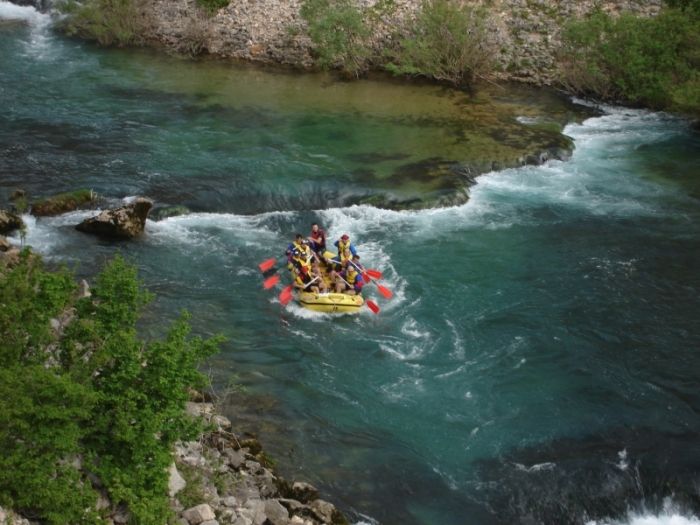
Photo courtesy of www.zadar.travel
18. Scuba Diving in Kornati National Park: Some of the most attractive diving locations lie in the depths of Kornati, diving alongside colorful fish, gorgonia, and sea sponges. Vertinguous abrupt walls swoop down to a depth of 60 meters, with the transparency of the sea making this an attraction for swarms of various fish species. Underwater reefs and red and soft corals create a colorful and ornamental journey for divers, and underwater caves rich in loopholes create the perfect lighting for the underwater species of flora and fauna beneath you.
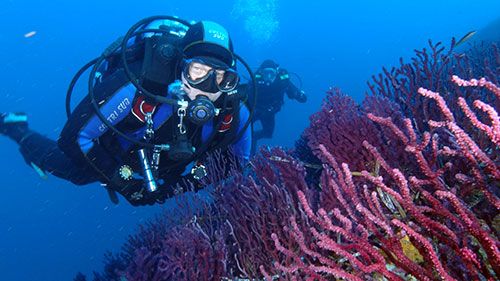
Photo courtesy of croatiadiving.com
19. Ziplining in Crikvenica: The first zip line to exist over the sea in Europe is conveniently located in Crikvenica, not far from Rijeka. With a starting point of 35 meters above sea level, the length of the descent is 500 meters and the entirety of the journey lasts about 30 seconds.
https://www.youtube.com/watch?v=eYg6YqQdcCY
20. Paragliding in Istria: Paragliding at Raspadalica camp in Istria offers some of the best scenery in the whole of Croatia. Situated on the plateau of the Ćićarija mountain above Buzet in northern Istria, this location offers a wild landscape, unspoiled nature, aromatic and medicinal plants, and old villages, making for an idyllic setting. With an altitude of 550 meters, and south-southwestern winds, this location is perfect for paragliding year round.
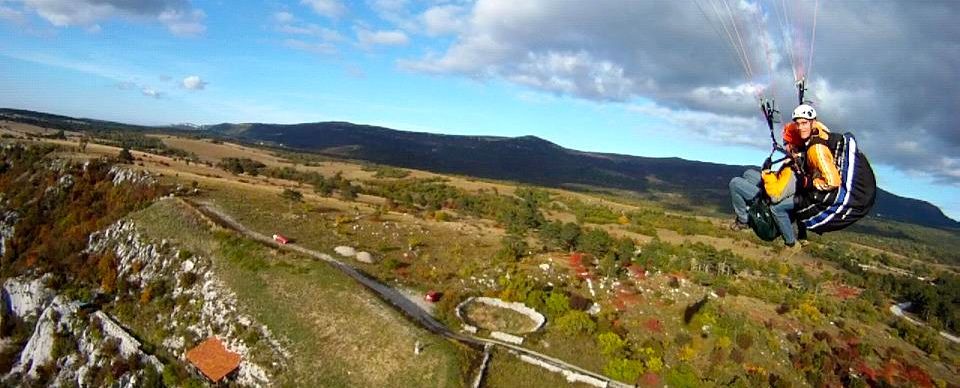
Photo courtesy of raspadalica.com
21. Horseback riding Lipizzaner Horses in Đakovo: The State Stud Farm in Đakovo was founded in 1506, making it one of the oldest horse farms in Europe. At the beginning of the 19th century, Lipizzaner horses began to breed at this stud farm, making them unique due to the conditions and circumstances in which they are bred. Queen Elizabeth II even visited Đakovo to ride the famous horses back in 1972! Having quickly gained popularity and world recognition, in addition to Lipizzaner training and dressage this stud farm also offers horseback riding and other activities for the public.
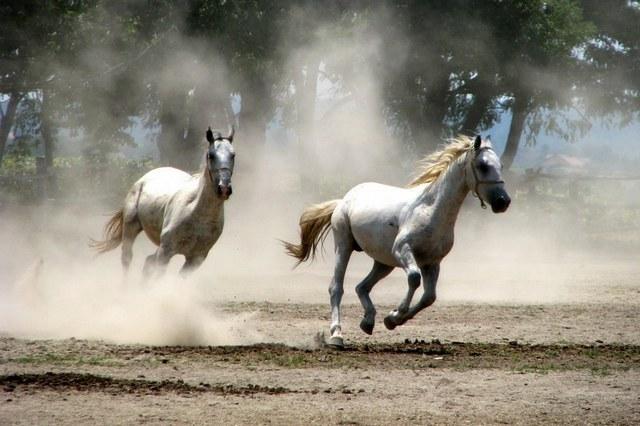
Photo courtesy of ergela-djakovo.com
22. Waterskiing in Poreč: Poreč boasts a ski lift that is 700 meters long, situated below the Hotel Laguna Molindrio at the Zelena Laguna Resort. Being the only one of this length in Istria and one of two in the whole of Croatia, this ski lift has become a favorite for waterskiing enthusiasts and extreme sport lovers everywhere. You can ski on the Poreč Riviera with a speed of 30-58 kilometers per hour, and try 5 different jumps.
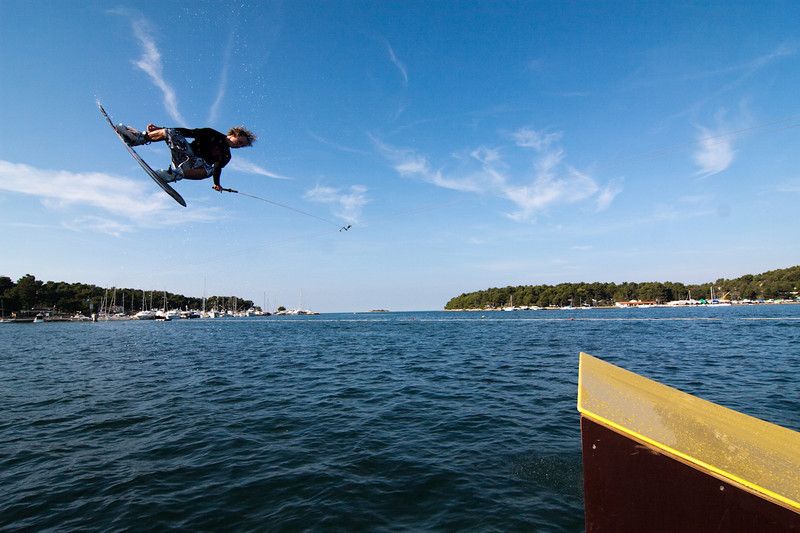
Photo courtesy of skilifeporec.com
23. Swimming Faros Marathon in Stari Grad: This long distance swimming competition will be in its 41st edition this year, making it the largest continuous international event in the whole of Croatia. A swimming marathon that is 16 kilometers long, this race takes you from the new waterfront in Stari Grad to cape Kabal and back. Held annually during the last weekend in August, this event has gained a world sports cult status and is not for the faint of heart.
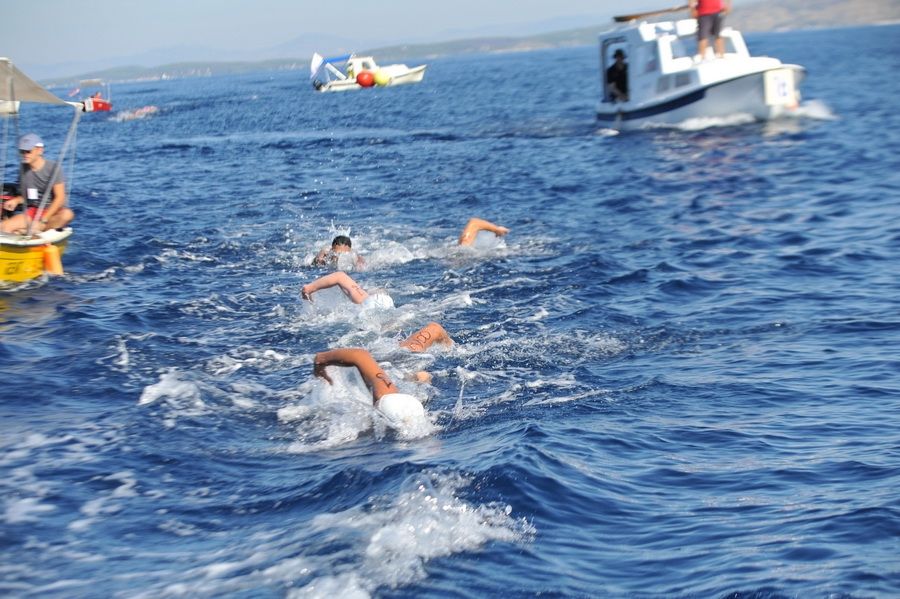
24. Triathlon Training in Hvar: Ever wanted to train for a triathlon while on vacation? You can do that on Hvar! Hvar’s hilly terrain, open sea, and breathtaking backdrop are obvious factors on why you’d want to train here, but Hvar actually offers programs for triathletes to train multiple times daily, with equipment rental included. Your triathlon training will take you through a combination of swimming, biking, running, and strength training, led by top notch athletes, avid cyclists, and even former ironman winners!
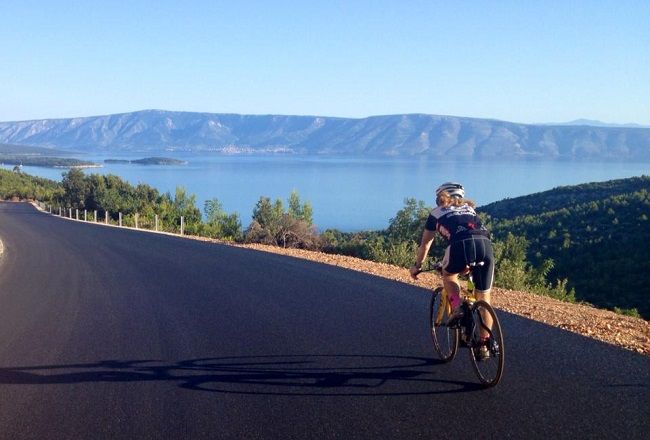
25. Caving in the Modrić Cave near Zadar: Located next to National Park Paklenica, the Modrić Cave was not allowed visitors until 2004, and still today not visited by many today. The Modrić Cave is 829 meters long, with chambers reaching up to 10 meters high. With no steps, paths or lighting inside, you are forced to wear overalls and a helmet with a carbide lamp to walk freeling within the cave. Filled with cave decorations, stalactites, and stalagmites, the caves remain a constant 15 degrees celsius. Essentially untouched, the cave is in its natural state, and definitely something you don’t want to miss.
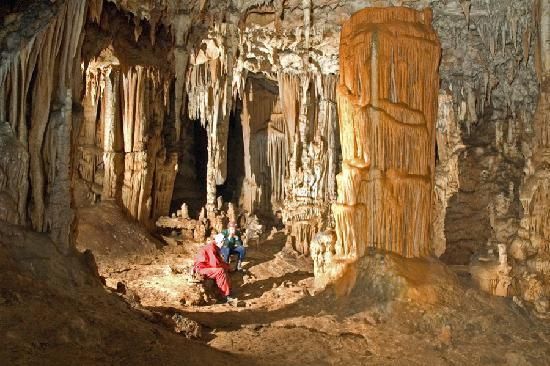
Time to see some action?
Check out this great adventure tourism trailer from &Adventure, which will give you a nice teaser of just part of what is available away from the beach.

